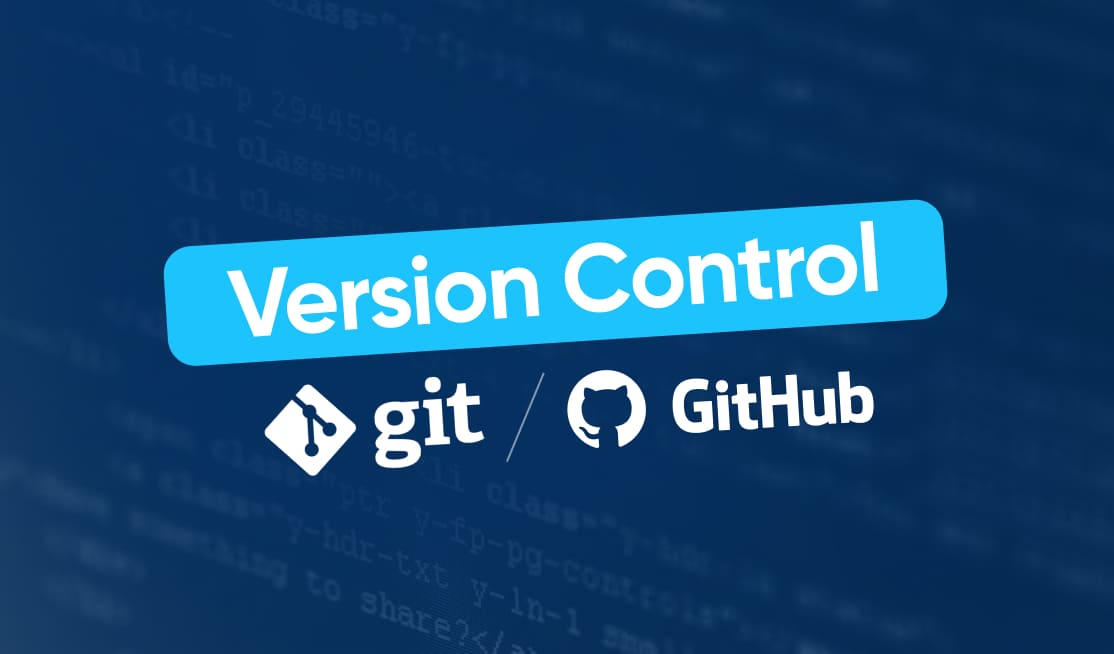
Version control is an essential part of any software development project. It allows multiple developers to collaborate on a codebase, keep track of changes, and revert to previous versions if needed. One of the most popular version control systems is Git, which provides a distributed and highly robust platform for managing code changes. In combination with GitHub, a cloud-based hosting service, developers can reap additional benefits such as collaboration, code review, and project management tools. In this article, we will dive into the world of version control with Git and GitHub, learning the concepts, commands, and best practices to become a proficient user.
Understanding Version Control
Version control is a mechanism used to track and manage changes made to a project’s files over time. The importance of version control cannot be overstated, particularly when it comes to software development. Without a version control system in place, developers would face numerous challenges when collaborating on projects, such as conflicting changes, the inability to revert to previous versions, and difficulty in understanding the evolution of the codebase.
At its core, version control allows developers to track changes, maintain a history of modifications, and manage different versions of files. It provides a central repository where project files are stored, enabling easy access, collaboration, and control over the development process. This centralized repository acts as a single source of truth for the project, ensuring that all team members are working with the same codebase and can contribute effectively.
The Importance of Version Control
Version control is crucial for several reasons. Firstly, it provides a safety net for developers and teams by allowing them to revert to a previous state of the codebase if an error occurs or an undesired change is made. This ability to roll back changes ensures code stability and reduces the risk of introducing bugs or breaking the project.
Secondly, version control facilitates teamwork and collaboration. With everyone working on the same codebase, it becomes easier to share, review, and merge changes made by different team members. This reduces conflicts and streamlines the development process, leading to faster and more efficient project delivery.
Lastly, version control systems provide visibility into the history of a project’s development. By examining the commit history and associated comments, developers can gain insights into the progression of the codebase, understand why certain decisions were made, and identify the context behind specific changes. This historical knowledge is invaluable when onboarding new team members or maintaining and enhancing existing projects.
Basics of Version Control Systems
Before diving into Git and GitHub, it is essential to understand some fundamental concepts shared by version control systems. The two primary types of version control systems are centralized and distributed.
In a centralized version control system, there is a single, central repository that holds all project files. Developers checkout files from this central repository, make changes, and commit them back to the same location. This approach has been widely used for decades and has proved its usefulness in managing codebases.
On the other hand, distributed version control systems, like Git, take a different approach. Instead of having a single central repository, each developer has a complete copy of the entire project’s history, along with the ability to work independently and make local commits. Changes can then be synchronized with remote repositories, allowing multiple developers to collaborate effortlessly. This distributed nature of Git lends itself well to projects with remote teams or those requiring continuous integration and extensive branching and merging.
Introduction to Git
Git is a free and open-source distributed version control system designed to handle everything from small to large projects with speed and efficiency. It was created by Linus Torvalds, the same developer behind the Linux operating system, and has gained massive popularity within the software development community.
Git’s design philosophy revolves around performance, scalability, and reliability. It provides a lightweight and fast version control system that can handle projects of any size effectively. Additionally, Git’s distributed nature makes it ideal for both individual developers and large, geographically distributed teams.
What is Git?
At its core, Git is a command-line tool that allows developers to create and manage repositories, track file changes, and collaborate with others. It stores the complete history of a project, capturing every modification made to each file over time. Git’s architecture is based on the concept of snapshots, where a snapshot of the entire project is saved whenever a commit is made.
Commits are the heart of Git. A commit represents a specific state of the project at a given point in time. Each commit is identified by a unique hash, allowing easy retrieval and reference to a particular state. Through this mechanism, Git enables developers to work on different features, bug fixes, or experiments independently, creating a seamless workflow.
Key Features of Git
Git offers a plethora of features that make it a preferred choice for version control. Some of the key features include:
- Branching and Merging: Git’s branching model allows developers to create lightweight, isolated environments to work on specific features or bug fixes. The ability to create, switch between, and merge branches makes collaboration seamless and efficient.
- Distributed Architecture: Git’s distributed nature means that each developer has a local copy of the entire repository, complete with its history. This allows developers to work offline, commit changes, and synchronize with remote repositories later.
- Fast Performance: Git is lightning-fast, thanks to its efficient data structures and compression techniques. Operations such as committing, diffing, and switching branches are highly optimized, ensuring a seamless and responsive experience.
- Advanced Versioning: Git provides advanced versioning capabilities, including the ability to cherry-pick specific commits, rebase or squash commits, and view differences between commits or branches. These features give developers fine-grained control over the evolution of their projects.
- Integrations and Extensions: Git integrates with a wide range of development tools and services, making it easy to leverage its capabilities within existing workflows. Extensions and plugins further extend Git’s functionality, providing additional features and enhancing productivity.
Getting Started with Git
To begin using Git effectively, it is crucial to set up the tool correctly and become familiar with its essential commands and operations. This section provides an overview of how to install Git and configure it for your development environment.
Installing Git
Git is available for various operating systems, including Windows, macOS, and Linux. The installation process is straightforward and typically involves downloading the installer from the official website and following the provided instructions.
For example, on a Windows system, Git can be installed by downloading the installer package from the Git website and running the executable. During the installation, users can customize various options such as the installation directory, integration with specific tools, and default behavior. Once the installation is complete, Git is ready to be used on the command-line or with graphical user interfaces.
Setting Up Git
After installing Git, it is essential to configure it with your name and email address, which will be associated with commits made by you. This configuration can be done globally, affecting all repositories on your system, or on a per-repository basis.
To configure Git globally, open a terminal or command prompt and run the following commands, replacing “Your Name” and “youremail@example.com” with your actual name and email address:
$ git config --global user.name "Your Name"$ git config --global user.email "youremail@example.com"This information will be included in the metadata of each commit you make and allows other contributors to identify the author of specific changes.
Git Commands and Operations
Once Git is installed and configured, it’s time to become familiar with the fundamental commands and operations necessary to work effectively with repositories. This section explores some of the common Git commands and introduces more advanced operations.
Common Git Commands
Git provides a wide range of commands to perform various tasks throughout the version control process. Some of the most frequently used commands include:
- git init: Initializes a directory as a Git repository, creating an empty repository.
- git clone: Copies an existing repository (local or remote) to a new directory.
- git add: Adds changes or files to the staging area, preparing them for a commit.
- git commit: Creates a new commit, saving the current state of the project.
- git push: Uploads local commits to a specified remote repository.
- git pull: Retrieves and merges changes from a remote repository into the current branch.
- git branch: Lists, creates, or deletes branches within a repository.
- git merge: Combines changes from different branches into the current branch.
- git checkout: Switches between branches or restores files from a previous state.
- git log: Displays the commit history of a repository.
These commands form the backbone of a developer’s Git workflow and allow for efficient management of a project’s version control.
Advanced Git Operations
In addition to the common commands, Git offers several advanced operations that can enhance developers’ productivity and provide greater control over the versioning process. Some of these operations include:
- Git Rebase: Allows for rewriting the commit history, modifying and rearranging commits to create a cleaner and more readable history.
- Git Cherry-pick: Selectively applies specific commits to another branch, allowing for the inclusion of specific changes without merging entire branches.
- Git Stash: Temporarily saves changes that are not yet ready to be committed, allowing developers to switch branches or retrieve specific modifications later.
- Git Reset: Resets the current branch to a specific commit, discarding all commits after the chosen point. This operation is useful for undoing or removing unwanted commits.
- Git Bisect: Helps identify the specific commit that introduced a bug by performing a binary search through the history of a project.
These advanced operations are powerful tools in the hands of an experienced Git user. They provide the means to tackle complex version control scenarios and efficiently manage the development process.
Introduction to GitHub
While Git provides the necessary tools for version control, GitHub acts as a powerful hosting and collaboration platform. It extends the capabilities of Git by adding a user-friendly web interface, project management features, and social coding elements. GitHub’s intuitive interface and extensive ecosystem have made it the most popular platform for hosting open-source projects and facilitating collaborative development.
What is GitHub?
GitHub is a web-based hosting service for Git repositories. It adds numerous features on top of Git, making it easier for developers to collaborate, share code, and manage projects. GitHub provides a central hub for storing, sharing, and discussing code, allowing developers to collaborate on projects effectively.
GitHub’s web interface allows users to browse and examine code, review changes made by other developers, and contribute to ongoing discussions. Additionally, it offers powerful project management capabilities such as issue tracking, milestones, and integrations with CI/CD tools, fostering a seamless development workflow.
Benefits of Using GitHub
The benefits of using GitHub extend beyond being a simple hosting platform. Some of the key advantages include:
- Collaboration: GitHub facilitates collaboration through features such as pull requests, code reviews, and branch protection, allowing teams to work together efficiently.
- Visibility and Discoverability: Projects hosted on GitHub gain visibility within the community, making it easier for users to discover, use, and contribute to them.
- Continuous Integration and Deployment: GitHub integrates seamlessly with popular CI/CD tools, allowing for automated testing, building, and deploying projects.
- Code Review and Quality: GitHub’s pull request functionality makes it easy to review proposed changes, provide feedback, and ensure the code meets quality standards.
- Community and Open Source: GitHub fosters a thriving community of developers, making it easy to connect, collaborate, and contribute to open-source projects.
These benefits make GitHub an indispensable tool for both individual developers and large teams, enabling them to enhance their development processes and deliver high-quality software consistently.
In conclusion, mastering version control with Git and GitHub is a crucial skill for any developer. Understanding the fundamentals of version control systems, learning how to use Git effectively, and harnessing the power of GitHub can significantly improve the development workflow, collaboration, and code quality. By incorporating version control practices into your development process, you can streamline project management, increase productivity, and ensure code stability. So, whether you are an individual developer or part of a team, diving into the world of version control with Git and GitHub is a worthwhile investment that will pay dividends in the long run. Start your journey today and unlock the full potential of version control for your projects.


